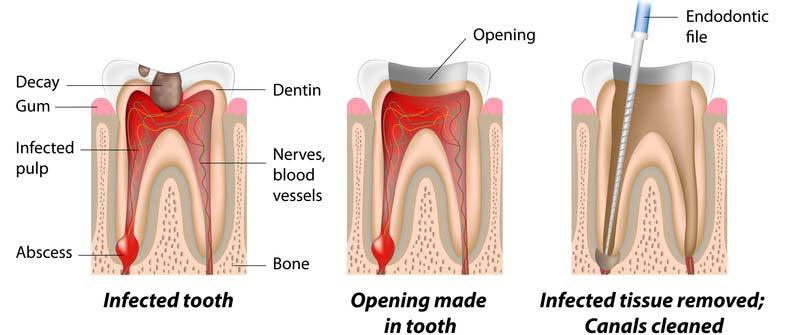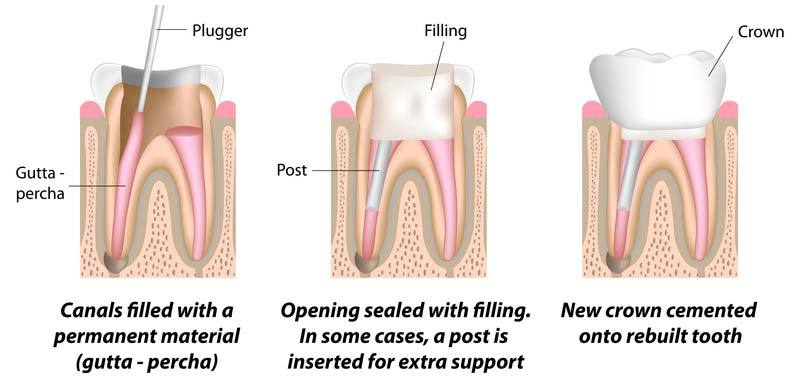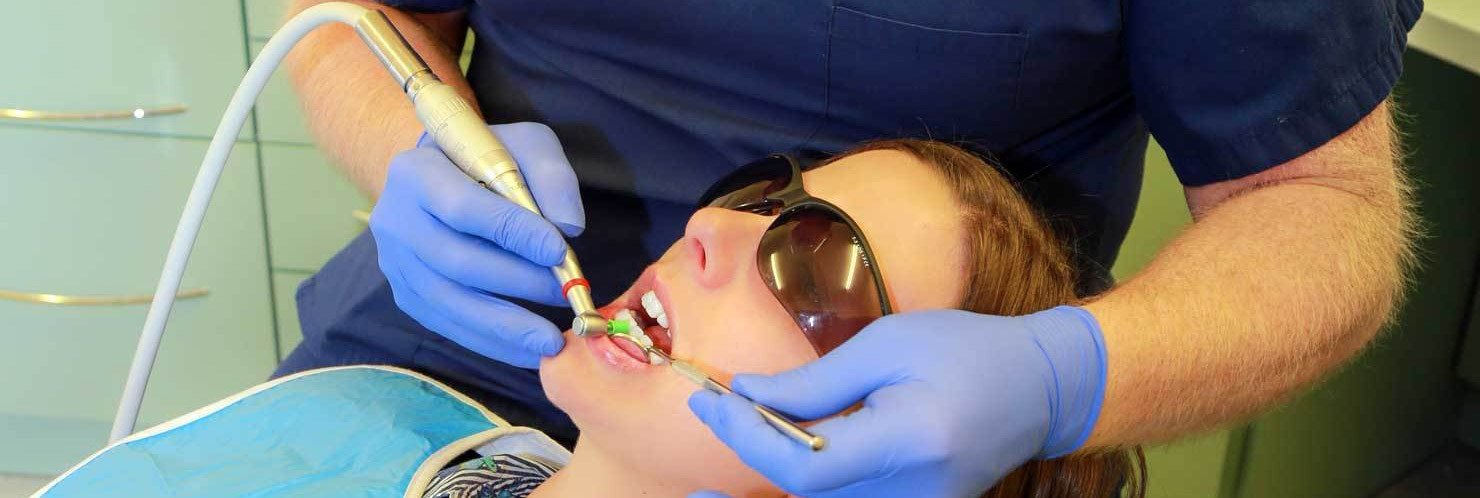Root Canal Treatment
A root canal treatment (or RCT) may be used to repair and save a tooth that is badly decayed or dies and becomes infected. Unfortunately, not all teeth can be treated in this way due to a variety of reasons. During a root canal procedure, the nerve and pulp are removed and the inside of the tooth is cleaned thoroughly and sealed. Without treatment, the tissue surrounding the tooth will become infected and an abscess may form.

"Root canal" is the term used to describe the natural cavity within the root of the tooth. The pulp or pulp chamber is the soft area within the crown of a tooth. The tooth's nerve lies within the pulp chamber and root canal system.
Is this treatment painful?
No. We usually use local anaesthesia throughout the different stages of the procedure and every possible step is taken to ensure that you are comfortable while the work is carried out.

Are there any risks associated with this treatment?
Root canal treatment is an intricate procedure that does not have a guaranteed outcome. There are various complications that can occur, and the treatment may not be successful in up to 50% of the most difficult cases:
- It is likely that you will experience some pain or discomfort, and possibly some swelling, immediately following treatment and for a few days afterwards. This is normally relieved by over-the-counter painkillers but can occasionally be more severe.
- Sometimes there can be a spreading infection from the tooth in which case we may prescribe antibiotics.
- The dentist may "perforate" the tooth (this is when a hole is made through the side of the root-canal) when searching for a particularly small or difficult root canal.
- Root-canal instruments are very fine and fragile- there is a possibility that one may break inside the tooth.
- The root filling may sometimes extend beyond the tip of the root, or may not completely fill the root to the tip.
- A root-filled tooth may become a little darker in colour than its neighbouring teeth.
What happens to my tooth next?
You will need to return to your dentist to have a permanent filling placed over the root-canal treated tooth. Root filled teeth are weaker and more brittle than live teeth- it is often advisable to restore the root-filled tooth with a crown or inlay to reinforce the tooth.







